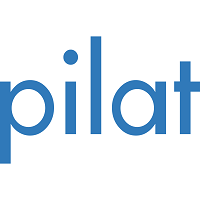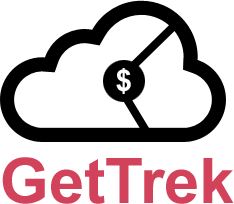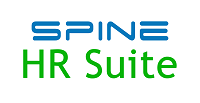Description

OrangeHRM

Pilat
Comprehensive Overview: OrangeHRM vs Pilat
OrangeHRM and Pilat Overview
OrangeHRM
a) Primary Functions and Target Markets:
- Primary Functions: OrangeHRM is an open-source human resource management software. Its primary functions include personnel information management (PIM), time and attendance tracking, recruitment, performance management, and a self-service portal for employees. It also offers modules for benefits administration, leave management, and compliance with various HR policies.
- Target Markets: OrangeHRM targets small to medium-sized enterprises (SMEs) and is popular in emerging markets where cost-effective and flexible HR solutions are in demand. The software’s open-source nature allows businesses to customize the platform according to their specific needs without a significant financial investment.
b) Market Share and User Base:
- Market Share: As an open-source solution, OrangeHRM has a significant share in the SME market, particularly in technology-savvy regions and industries that prioritize customization.
- User Base: Its user base is diverse, spanning various countries and industries. The software appeals to users who prefer having control over their HR solutions and enjoy the benefits of a supportive open-source community.
c) Key Differentiating Factors:
- Cost-Effectiveness: The open-source model provides a cost advantage, requiring lower initial investment and offering flexibility in terms of deployment.
- Customization: Users can extensively modify and extend the functionality.
- Community Support: A strong community of developers and users contributes to the platform’s ongoing development.
Pilat
a) Primary Functions and Target Markets:
- Primary Functions: Pilat focuses on performance management solutions within HRM. It provides tools for performance appraisals, talent management, succession planning, and strategic workforce planning. Pilat integrates these features to align HR processes with organizational goals.
- Target Markets: Pilat primarily targets larger organizations and enterprises needing sophisticated performance management systems. Its services are designed for industries where strategic HR planning and alignment with corporate objectives are critical.
b) Market Share and User Base:
- Market Share: Pilat holds a specialization niche in the market with a focus on performance management, appealing particularly to large firms seeking to enhance their strategic HR capabilities.
- User Base: Predominantly consists of large enterprises operating in sectors such as finance, healthcare, and technology that require advanced HR analytics and performance management features.
c) Key Differentiating Factors:
- Focus on Performance Management: Unlike more generalized HR platforms, Pilat narrows its focus to performance and talent management, providing deep expertise and specialized tools.
- Integration and Custom Solutions: Offers a high level of service customization and integration, helping large firms tailor the software to fit with their existing systems and strategic objectives.
- Strategic Alignment: Emphasizes aligning HR processes with broader business strategies, helping firms manage and leverage their talent more effectively.
Comparison Summary
- Market Focus: OrangeHRM serves SMEs with a broad HR solution approach, while Pilat targets larger enterprises with specialized performance management tools.
- Business Model: OrangeHRM uses an open-source model promoting flexibility and user-led development, whereas Pilat operates on a proprietary model offering specialized solutions.
- User Experience: OrangeHRM appeals to cost-conscious organizations seeking a customizable platform, while Pilat attracts clients needing comprehensive strategic HR management tools.
- Market Share and Reach: OrangeHRM has broader international reach among SMEs due to its open-source nature, while Pilat commands a niche market among large organizations seeking sophisticated HR solutions.
Contact Info

Year founded :
2006
+1 914-458-4254
Not Available
United States
http://www.linkedin.com/company/orangehrm

Year founded :
1974
Not Available
Not Available
Israel
Not Available
Feature Similarity Breakdown: OrangeHRM, Pilat
OrangeHRM and Pilat are both human resource management systems (HRMS) designed to streamline HR processes within organizations. Here's a breakdown of their feature similarities and differences:
a) Core Features in Common
-
Employee Management:
- Both systems have a centralized employee database for storing employee information, including personal details, job roles, and department assignments.
-
Performance Management:
- Both platforms offer features for managing employee performance evaluations, setting objectives, and tracking progress.
-
Time and Attendance:
- Both OrangeHRM and Pilat provide time tracking and attendance management, facilitating leave requests and approvals.
-
Recruitment Management:
- They include modules for managing job postings, applications, and candidate tracking.
-
Training and Development:
- Both offer features for managing employee training programs and tracking skill development.
-
Payroll and Compensation Management:
- Basic payroll management features are available in both platforms, allowing users to manage salary processing and compensation structures.
b) User Interface Comparison
-
OrangeHRM:
- OrangeHRM is known for its user-friendly interface that provides easy navigation and straightforward access to its modules. It's designed to minimize the training time for new users.
- It often features a more modern aesthetic, with dashboards that are customizable to fit the needs of the user.
-
Pilat:
- Pilat’s user interface focuses on functionality and comprehensive data management. While effective, it might not be as visually appealing or intuitive as OrangeHRM.
- It often emphasizes detailed analytics and reporting capabilities, which might make the interface appear more complex to navigate for some users.
c) Unique Features
-
OrangeHRM Unique Features:
- Open Source Option: OrangeHRM offers an open-source version, allowing organizations to host on-premises and customize the software extensively to fit their unique needs.
- Marketplace and Extensions: It has a variety of add-ons and extensions through its marketplace, enabling custom features to be integrated.
- Compliance Tools: OrangeHRM often emphasizes compliance with labor laws and data protection regulations more so than some competitors.
-
Pilat Unique Features:
- Advanced Analytics and Reporting: Pilat provides in-depth workforce analytics and data reporting tools that are often more advanced than those in OrangeHRM, allowing for deeper insight into HR metrics.
- Customizable Framework: Pilat offers high levels of customization in terms of both functionality and metrics, catering to complex organizational needs.
- Performance Calibration Tools: It often features advanced calibration tools enabling managers to ensure consistency and fairness in performance evaluations across different departments.
Both platforms have strengths and may appeal to businesses differently based on their specific HR needs, the size of their company, and the complexity of HR processes they must handle.
Features

Employee Management
Performance & Training
Recruitment
Time & Attendance
Reporting & Analytics

Performance Management
Employee Development
Talent Management
Best Fit Use Cases: OrangeHRM, Pilat
OrangeHRM and Pilat are both Human Resource Management systems that cater to different organizational needs and cater to varying business types. Here’s a detailed breakdown of their best fit use cases:
OrangeHRM
a) Best Fit for Businesses/Projects:
- Small to Medium Enterprises (SMEs): OrangeHRM is particularly ideal for small to medium-sized businesses. Its open-source nature allows smaller firms to manage HR functions effectively without incurring the costs associated with larger, more complex systems.
- Companies Looking for Customizable Solutions: With its modular design, businesses can customize the platform by selecting only the modules they need, such as leave management, time and attendance, recruitment, or performance management.
- Organizations with Limited IT Resources: OrangeHRM offers a user-friendly interface and cloud-based options, reducing the need for extensive IT infrastructure and support.
- Budget-Conscious Enterprises: The open-source version provides a cost-effective solution for companies looking to manage HR processes without significant financial investment.
d) Industry Verticals and Company Sizes:
OrangeHRM caters primarily to industries with less complex HR needs where customizability and cost-efficiency are key. It is ideal across diverse sectors, such as technology startups, retail companies, or non-profits, where staff numbers are moderate, and HR processes need straightforward digital solutions.
Pilat
b) Preferred Scenarios:
- Large Enterprises with Complex HR Needs: Pilat is suited for large organizations that have complex HR requirements, including comprehensive talent management, succession planning, and organizational development.
- Custom Development Requirements: Companies looking for tailored HR solutions that integrate with existing systems or require specific functionalities benefit from Pilat’s ability to customize HR processes and systems closely aligned with organizational needs.
- Organizations Focused on Talent Development and Analytics: Pilat excels in scenarios where businesses have a strong focus on developing employee potential and require robust analytics and reporting capabilities to assess and manage talent.
d) Industry Verticals and Company Sizes:
Pilat serves well in industries that require comprehensive HR management, such as financial services, healthcare, and manufacturing, where businesses demand complex solutions around workforce analytics and strategic HR planning. Large corporations or groups of companies that require detailed insight into HR processes and employee data would find Pilat highly beneficial.
Conclusion
- OrangeHRM is best for smaller, growing businesses or those with limited budgets seeking an easy-to-use, cost-effective HR solution with core functionalities.
- Pilat suits larger, established organizations in need of customized, comprehensive HR strategies, especially those that place significant emphasis on talent development and analytics.
These distinctions help guide businesses in aligning their HR needs with the right platform by evaluating the scale, complexity, and budgetary requirements of their HR operations.
Pricing

Pricing Not Available

Pricing Not Available
Metrics History
Metrics History
Comparing teamSize across companies
Conclusion & Final Verdict: OrangeHRM vs Pilat
Conclusion and Final Verdict for OrangeHRM and Pilat:
When evaluating Human Resource Management Systems (HRMS), OrangeHRM and Pilat both present unique strengths and challenges. Making the best choice depends largely on an organization's specific needs, budget constraints, and operational preferences. Here's a detailed look at each product:
a) Best Overall Value:
OrangeHRM generally offers the best overall value for small to medium-sized businesses looking for a comprehensive, user-friendly, and cost-effective HR solution. It's open-source aspects and modular approach make it highly adaptable to various needs and budgets.
Pilat, on the other hand, may provide better value for larger organizations with complex HR requirements and a need for deep customization. Its robust analytics and tailored solutions might justify the additional costs involved for enterprises with these specific needs.
b) Pros and Cons:
OrangeHRM:
-
Pros:
- Affordability: Offers a free open-source version, which is cost-effective for smaller firms.
- Flexibility: Modular design allows companies to select only the features they need, helping to manage costs efficiently.
- Ease of Use: Intuitive interface with straightforward navigation, suitable for organizations with limited IT resources.
- Community and Support: Strong community support and available resources for troubleshooting.
-
Cons:
- Scalability: May not scale as effectively for very large organizations or highly complex HR processes.
- Customization Limitations: While customizable, the open-source version may require technical expertise for advanced customization.
- Feature Depth: Some features may not be as comprehensive or detailed as those offered by more expensive competitors.
Pilat:
-
Pros:
- Customization and Integration: Highly customizable solutions tailored to specific organizational needs and seamless integration capabilities with other systems.
- Feature Richness: Offers in-depth analytics and reporting capabilities ideal for strategic HR planning and decision-making.
- Enterprise Focus: Designed with the enterprise customer in mind, handling complex HR scenarios effectively.
-
Cons:
- Cost: Typically more expensive, which can be prohibitive for smaller businesses with limited budgets.
- Complexity: May require a longer learning curve and dedicated IT resources to implement and maintain.
- Vendor Dependency: Custom solutions might increase reliance on vendor support and service.
c) Specific Recommendations:
-
Evaluate Needs and Scale:
- If your organization anticipates rapid growth or has complex HR requirements, Pilat might be the more sustainable choice in the long run.
- For smaller companies or those with simpler HR processes, OrangeHRM could offer sufficient functionality without breaking the bank.
-
Budget Considerations:
- OrangeHRM's open-source edition or lower-cost modules are a great starting point for budget-conscious initiatives.
- Pilat may be worth the investment for organizations with a flexible budget and the need for high-level customization.
-
Technical Capability:
- Choose OrangeHRM if your organization lacks a robust IT department, as it generally requires less technical involvement.
- Opt for Pilat if you have technical resources to set up and customize the system extensively.
-
Trial Period:
- Taking advantage of free trials or demos can provide hands-on experience to further guide decision-making.
By carefully considering these factors, organizations can make an informed choice that aligns with their HR management goals and strategic vision.
Add to compare
Add similar companies




